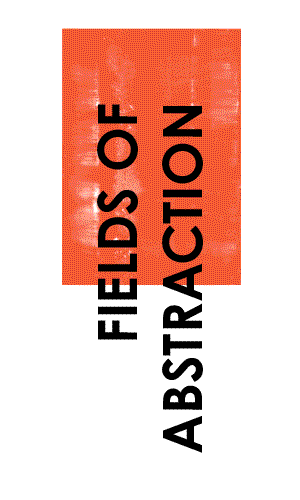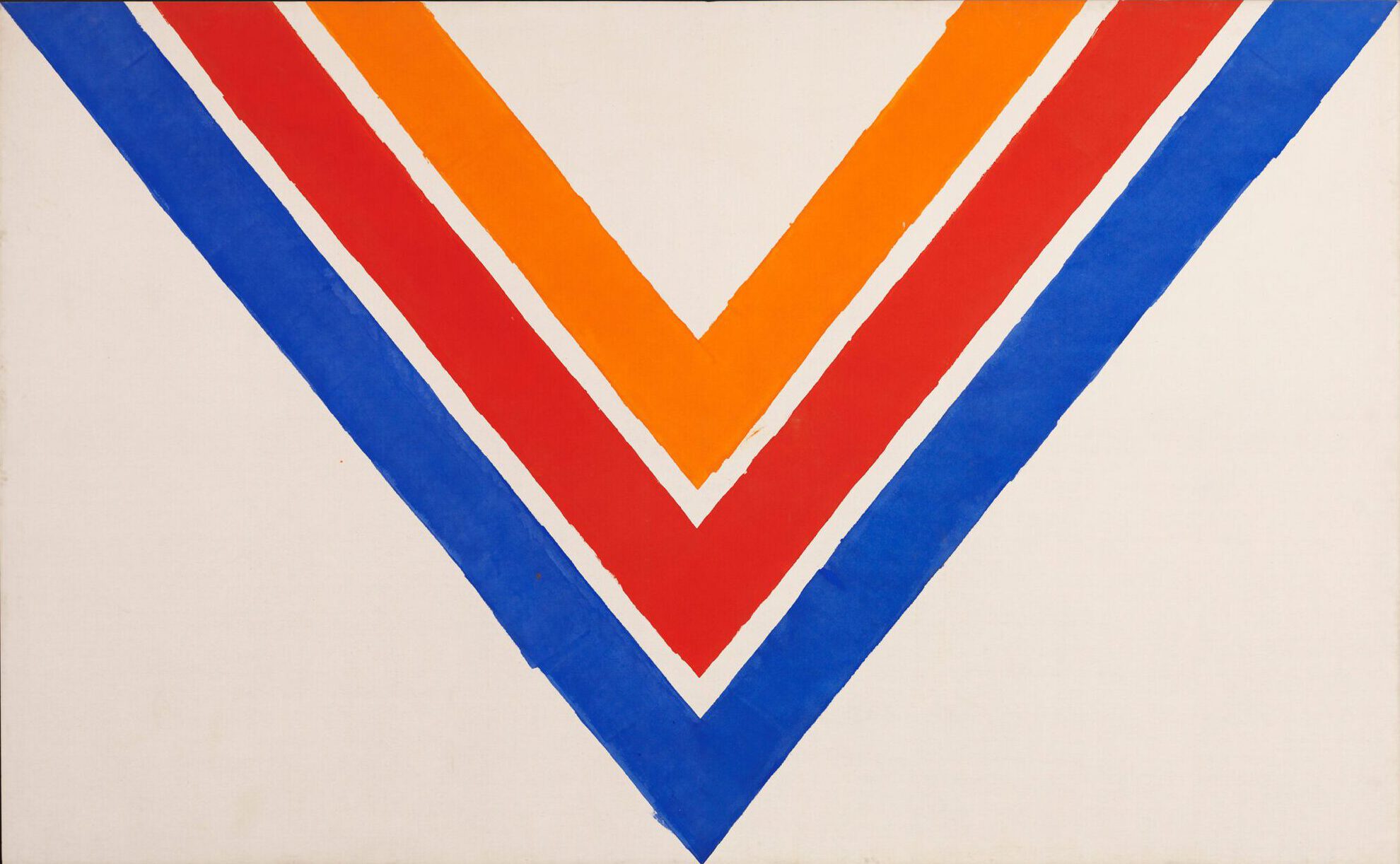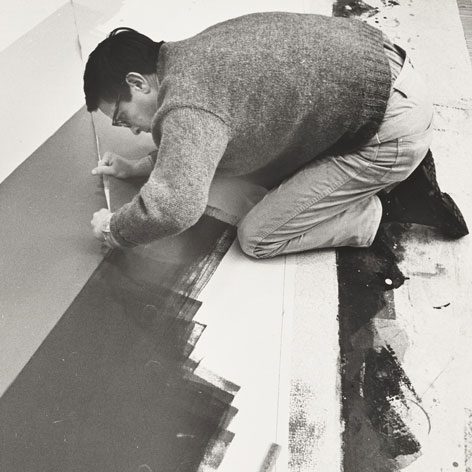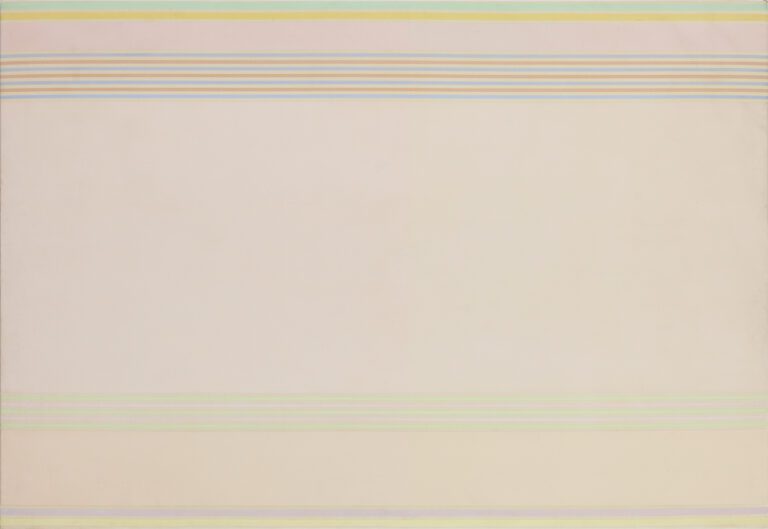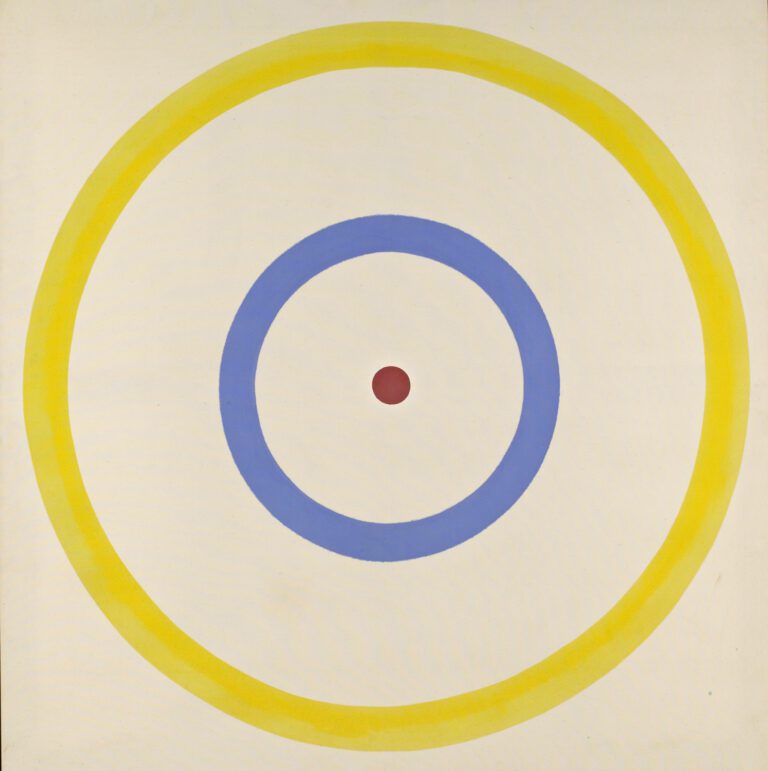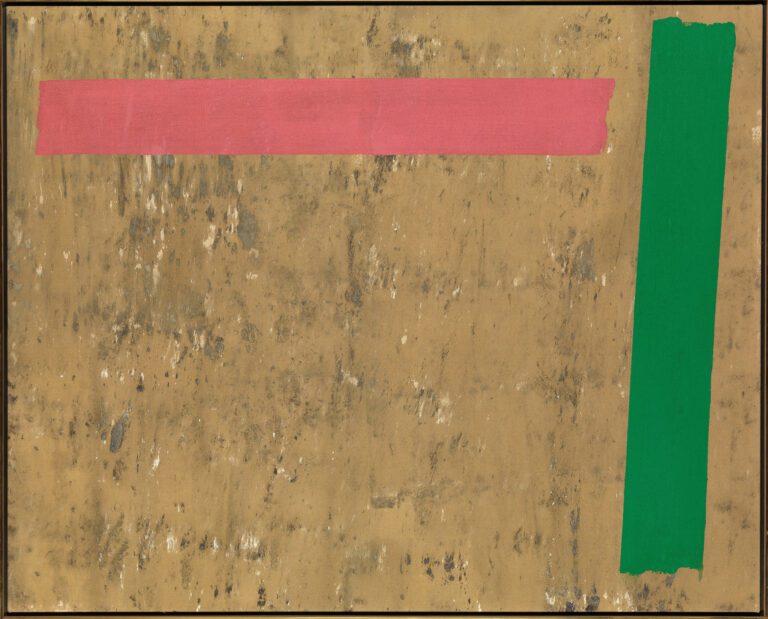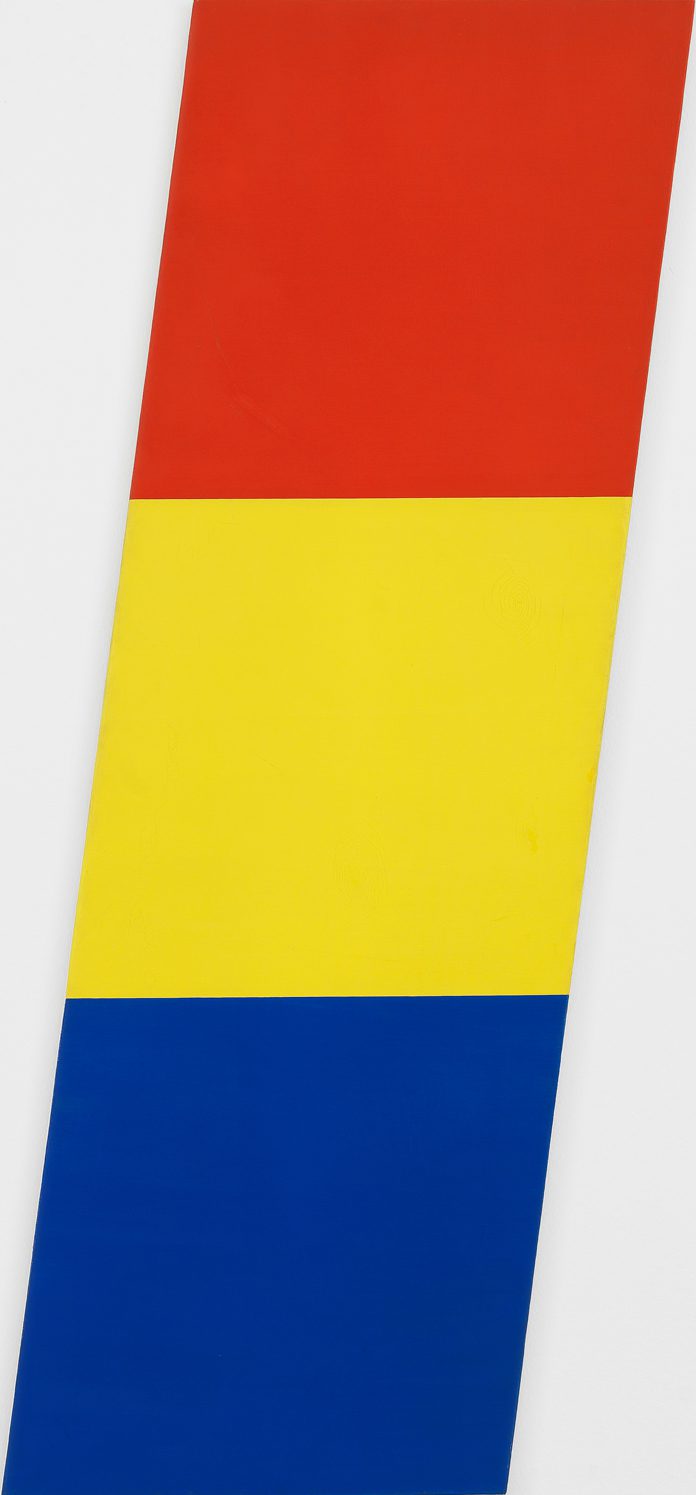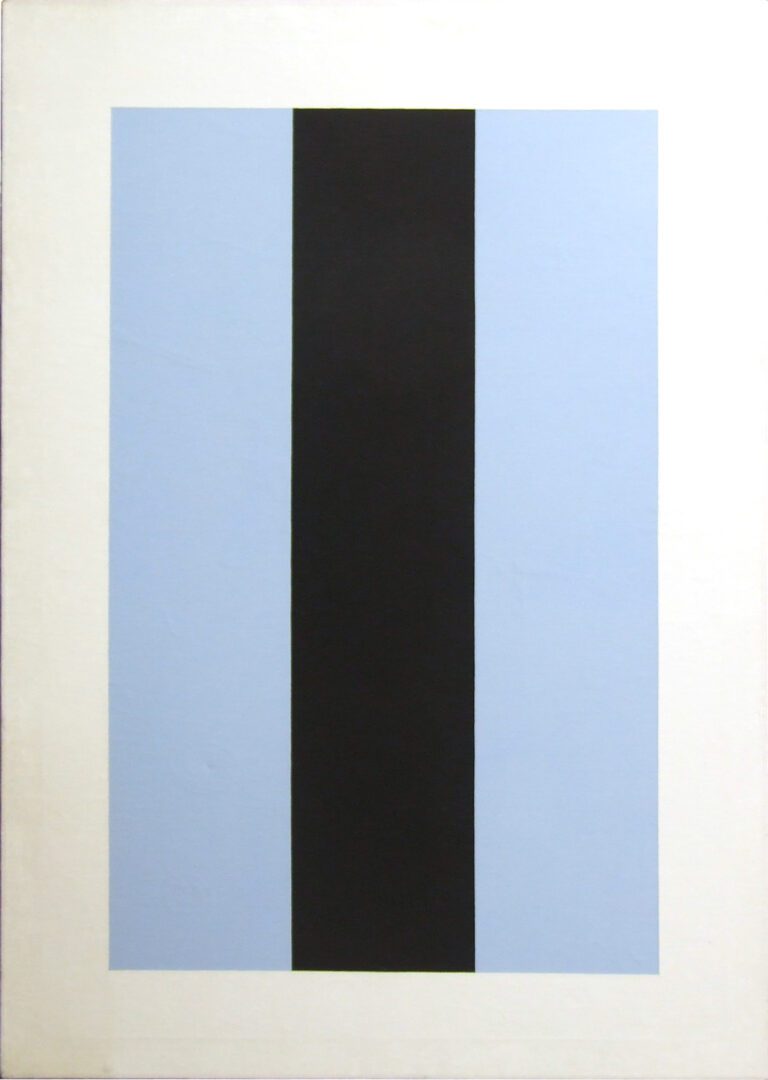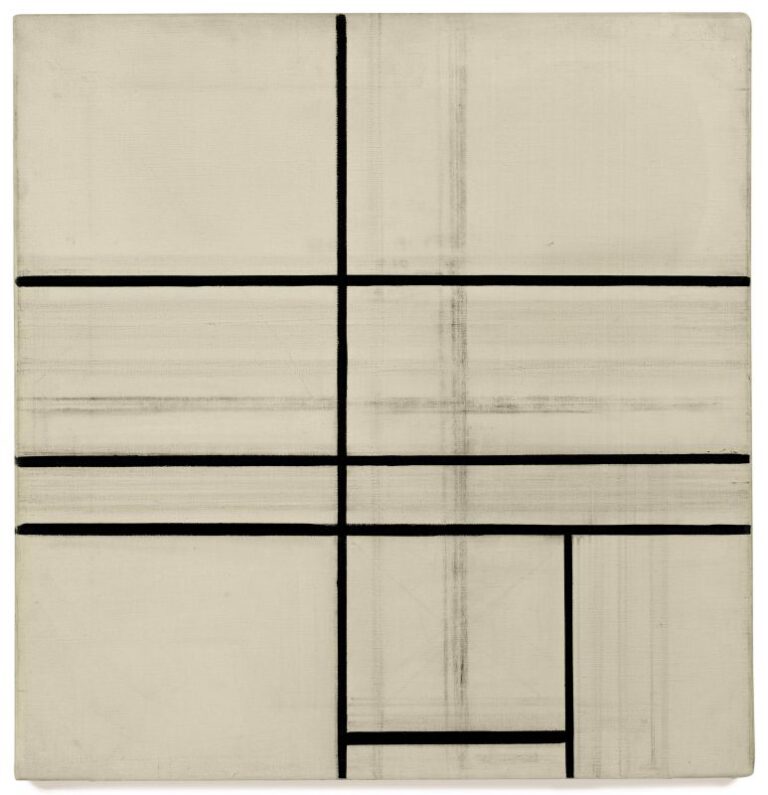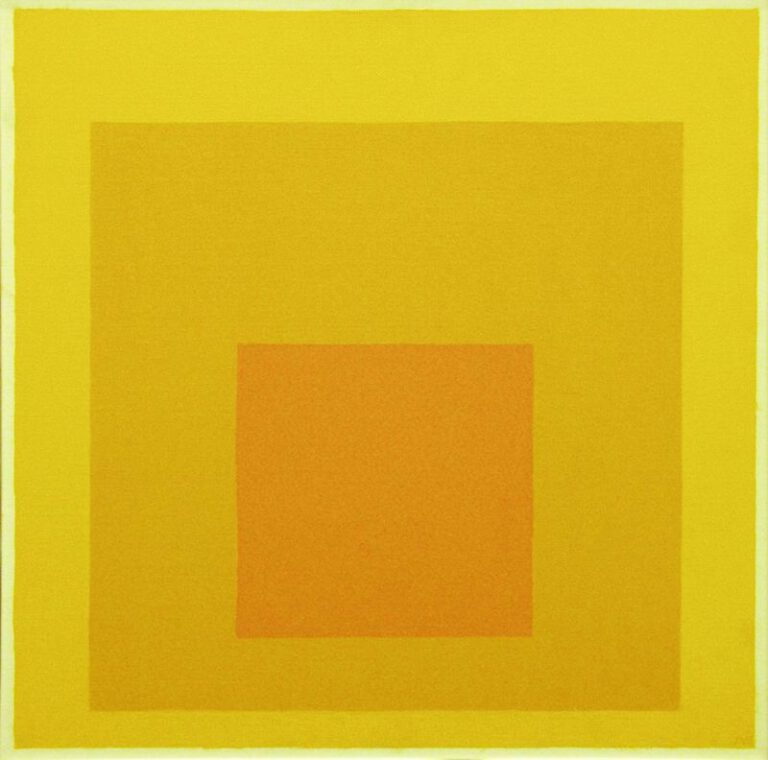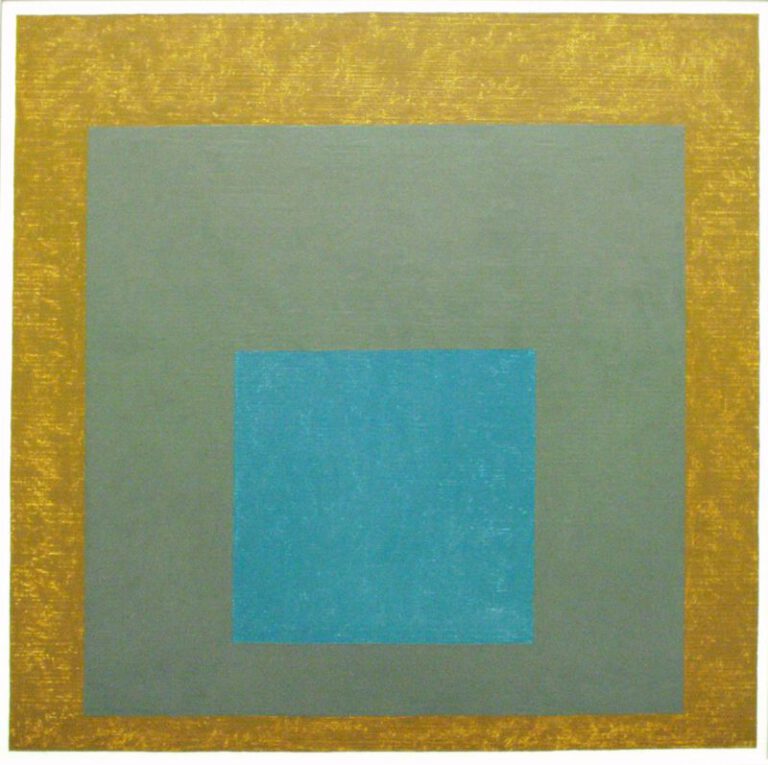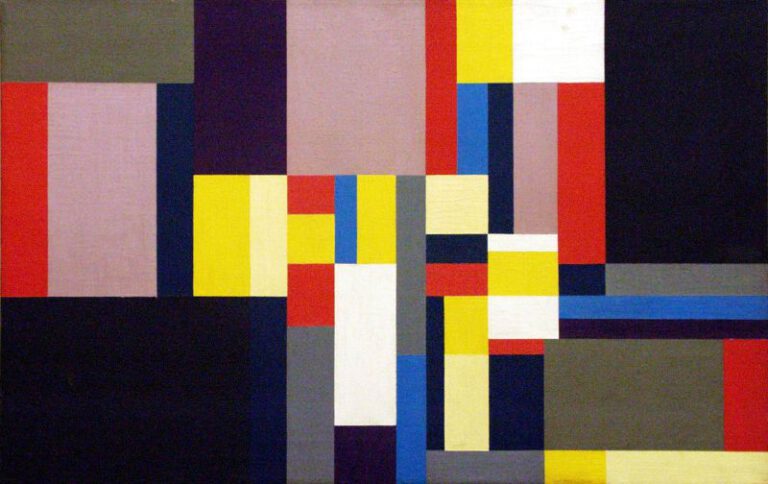After studying art in North Carolina and Paris, American abstract painter Kenneth Noland moved to Washington, where he befriended Morris Louis. In 1953, on a visit to New York, the two were greatly impressed by Helen Frankenthaler’s breakthrough painting Mountain and Sea (1952), where she developed her signature technique of staining unprimed canvas with thinned acrylic.
Noland produced several series in which he explored the effects of color, and particularly the relationship between the painted sections of the canvas and the bare, untouched parts. Applying the paint with a brush and roller, he let the color become part of the weave of the canvas rather than superimposing it on the flat surface. In 1963, Noland began a series focused on the motif of the chevron, or “V” shape, characterized by triangular bands of color pointed toward the bottom of the picture plane. The execution of the works required great precision, and Noland referred to them as “one-shot” paintings.
Taking its title from the realm of carpentry, Chamfer focuses on right-angled edges or corners to create softer transitional edges. At first glance, the painting gives the impression of geometric precision and purity of hue: three colored triangles in orange, red, and blue center on the axis of the canvas in symmetry. The tip of the blue triangle is just barely cut by the bottom edge of the canvas. The natural canvas is apparent between the triangles, above them, and on their sides, producing tension between painted and raw surfaces. The stained triangles seem to be precisely articulated and uniform in saturation, an accuracy that might indicate the use of a ruler to trace the lines. The rhythmic repetition of the shape, the simple colors, and the harmony between them speak to the principles of Minimalism, a movement that sought to convey the essence of form. However, upon closer inspection, the three lines forming the triangles can be seen to be slightly uneven and the colors, which from a distance seem uniform and solid, to modulate irregularly from top to bottom. They breathe and are not locked in laconic, geometric indifference.
Maria Pudalova
